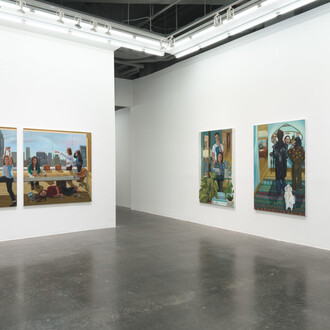Anna Zorina Gallery is honored to present Bernard Perlin: Painter of Life and Light, a retrospective of the recently deceased Bernard Perlin (1918 - 2014). Perlin was the last living member of a great New York artistic gay “cabal” of the 1940s and ’50s that included George Platt Lynes, Glenway Wescott, Monroe Wheeler, Pavel Tchelitchew, Lincoln Kirstein, and Paul Cadmus.
The great American artist will be celebrated for his luminous palette and fastidious style, which he bestowed upon us for nearly seven decades. The genesis of his work varied immensely over the years - each derivation shifting in accordance with his residence, occupation and age to reflect his surrounding social climate. His notable technical finesse and his illustrious use of color define his style and serve as the uniting thread within his life’s work.
Born in Richmond, Virginia, Perlin’s career was launched during his involvement in World War II. He worked with the Office of War Information and then as a war artist-correspondent for Life and Fortune magazines. His subject matter ranged from political propaganda to reportage to self-declared realism. It was in this period that he began to translate brutal accounts of violence into visions of color and composition, rendering acts of war into detailed and forceful expressions of power, action and somber rumination.
Perlin instilled artworks with his insatiable desire to explore and push boundaries to the limit. He was greatly inspired by his surroundings, and as he traveled the world he found himself in constant flux, varying his technique, subject matter, and mood to reflect his mercurial and vivacious life. One notable instance occurred after Perlin’s move to Italy in 1948. Inspired by the works of the Pre-Raphaelites as well as the change in scenery, Perlin replaced his hard edges and flat, color-blocked figures with light, airy brushstrokes. This newly adopted technique created soft, luminous patches of color and conveyed whimsical, dreamlike scenes. Perlin continued to undergo significant aesthetic changes throughout his long artistic career.
This retrospective offers an in-depth visual analysis of the many style shifts that Bernard Perlin’s figural work underwent from 1935 through 2012. Perlin focused on architecture, landscapes, and still lifes. However, it was through his depictions of humanity and the people in his life that he was able to express the most emotion, show the greatest transformation, and convey the highest level of artistry.
















